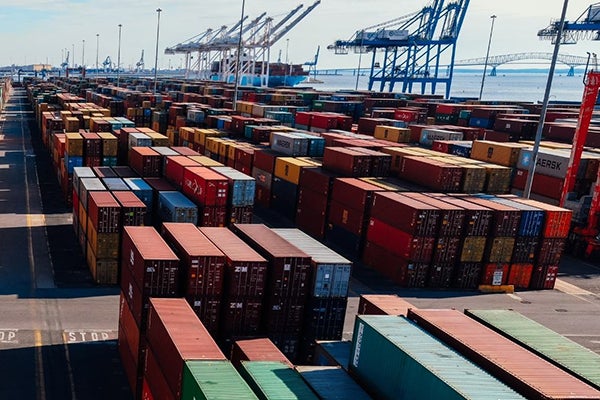Disruption and the future of the global supply chain
The pandemic brought two relatively obscure words into the forefront of our collective consciousness: supply chain.
Supply chain disruptions, shipping delays, port congestion and product shortages continue to plague global economies, and the news remains grim.

The COVID-19 pandemic forced companies to rethink and restructure their supply chain strategies, potentially revolutionizing how supply chains are managed and run on a global scale. (Contributed photo)
Indeed, Federal Reserve Chair Jerome Powell recently stated that COVID-19 disruptions to global supply chains may continue to push prices up through 2022 and possibly into 2023. Analysts, business leaders, politicians, and importantly, consumers wonder if consumption and economic progress will ever be like it was pre-COVID. However, what if the pandemic is actually a catalyst for innovative and forward-looking processes and strategies that can revolutionize how supply chains are managed and run on a global scale?
The pandemic may emerge as one of the most significant opportunities for companies in the last 100 years. The shock is forcing companies to reevaluate their global operations and develop and execute new and innovative strategies that will improve global supply chain management in the immediate future and pave the way for more resilient supply chains that push the current boundaries of efficiency and effectiveness.
How will this happen?
To start, several companies have sped up operational and strategic changes already underway. Here in North Carolina, manufacturers are looking at product redesign to reduce the amount of raw material used in manufacturing, change electronics systems to rely less on chips and other difficult-to-obtain components, and even drop less profitable product lines. Retailers are also finding ways to innovate and become more consumer responsive while maintaining or improving efficiency. Regional grocery chains in eastern North Carolina have adjusted store hours, product mix and replenishment schedules to help balance their efficiency and effectiveness.
Pandemic positives?
Across the country, companies are rethinking and restructuring their supply chain strategies to help mitigate COVID-related disruptions and make them more competitive.
For example, Under Armour is using lessons learned from the pandemic to accelerate inventory, pricing, delivery and production initiatives to improve its efficiency and effectiveness. U.S.-based electronics, automobile and aerospace companies understanding the vulnerability of their global supply chain operations began to reshore and reduce their supply chain risk and exposure years ago and continue today.
Companies today are also employing strategies and disruptive technologies such as blockchain and 5G to reduce waste, improve transportation efficiencies through routing technologies and provide greater transparency throughout their global supply chains.
Another concept is what academics labeled a “global scanner strategy” for companies decades ago. A global scanner maps their global supply chains with detailed end-to-end information. It treats its global operations as part of integrated network models, viewing worldwide operations as specialized and interdependent.
So, instead of making sourcing and customer market decisions independently, companies look globally to determine the best location of operations based on areas or regions of suppliers and customers. Experts are also picking up on this idea now that far-flung and complex supply chains have become more and more challenging (e.g., regionalization).
Finally, companies like Freightliner, a subsidiary of Daimler Truck, are revisiting relational strategies to improve supply chain synchronization by reducing barriers to supply relationships and processes. The procurement team has been working to give resource and technological support to their suppliers to improve production, logistics and efficiencies. This move toward more strategic relationships would have been considered almost an anomaly in some industries just a few years ago.
Supply chains have been around since ancient times and entered into the common business vernacular decades ago. What has changed more recently is that supply chains are now complex, global, fragile and increasingly difficult to manage. At the same time, expectations are greater today than ever before. Call it the “Amazon effect” or any other number of monikers. Still, the four “Fs” of consumerism today, the fast, free, frictionless, flow shopping and shipping experience, have undeniably impacted what is expected from global supply chains.
Innovative technologies such as blockchain, internet of things (IoT), artificial intelligence, supply chain mapping and machine learning may all significantly impact the way global supply chains are managed today and in the future. These technologies, combined with proactive strategies and innovation, could evolve to future concepts of Industry 5.0 and beyond if companies can conceive and implement processes that mitigate global supply chain risk and make them more resilient to future risks and disruptions.
Dr. Jon Kirchoff is an associate professor in the College of Business’ Department of Marketing and Supply Chain Management. Dr. John Kros is the Vincent K. McMahon Distinguished Professor of Marketing and Supply Chain Management in the College of Business.